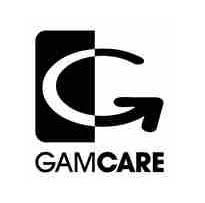When you are just starting out in Pot Limit Omaha, you will probably come across plenty of advice and strategy guides that pertain to ‘playing the percentages’. I.e. doing the right things at the right time to give yourself, statistically speaking, the greatest chance of winning a hand or at least minimizing your losses.
But when you study the careers of some of the best Omaha players in the business, past and present, you note that their ability to do the unexpected is often their greatest weapon in tournament play.
Source: Pixabay
One such character would be Ryan Laplante, the former WSOP bracelet winner and Poker Masters champion who has earned over $5 million from his live and online play.
Given his success, we should all be very grateful that Laplante has also turned his hand to poker coaching too, via his own Learn Pro Poker website.
Here, the Minnesotan guides users through his take on the Game Theory Optimal (GTO) strategy, and reveals when players should adopt the theory and when they should deviate from it.
He uses the example of a hand he played at that Poker Masters final table back in November, when he would go on to cash a cool $186,000 for outlasting Tim McDermott.
In the hand in question, Laplante had pocket aces backed by a two and a three (for context, McDermott had ace and queen suited, plus a jack and eight.
Pre-Flop
In this case, he turns general logic on its head by describing his pocket aces as ‘dusty’, i.e. not great, because they are backed by the relatively weak 2-3 off-suit. Even the possibility of a straight does not get his engine running.
However, Laplante recognized that these so-called ‘bad aces’ are still good enough to put him in a dominant position in most situations, and that’s why he chose to raise to 75,000 pre-flop. McDermott took the bait.
The WSOP winner believes that pre-flop action is key in PLO, and that big chip moves should come with pocket aces. “The moment you can get 30% or more of your stack in preflop, you should pretty much always do it with aces,” Laplante has said.
He also reflected on ‘board coverage’ in pre-flop situations, which relates to the range of options available to you after the flop is made. In this sense, Laplante confirmed, McDermott was in a better position with his double-suited rundown than he himself was with his bad aces, based simply on the fact that McDermott has a broader range of options post-flop – a theory he describes as ‘barrel equity’.
The Flop
On the flop, a king, nine, and three were revealed. Laplante had two pair, while McDermott was edging towards a flush draw with four diamonds in hand.
McDermott check-raised to 580,000 after Laplante had bet 125,000 to keep the hand in motion. Laplante folded.
He had calculated in his mind that his ‘overpair’ still put him in a good position, hence the big bet, but that McDermott was probably holding the value hand given the variables – hence the subsequent fold to the raise.
Anybody wondering how to react to a check-raise were also given some pointers by Laplante. He attempted to second guess McDermott here, as is necessary, and felt his opponent had both a straight and a flush draw – again, that notion of ‘hand equity’ reared its head here.
“With the bare aces where I don’t block any of his value hands, it doesn’t really matter that I don’t block his draws because all of those have so much equity against me,” he reflected. “It’s just a fold [in this situation].” However, Laplante suggested he might have called had this not been a final table of a major tournament.
There’s that saying in life that every day is a school day. That is certainly the case in Omaha, where we should never cease to try and push our game forward to the next level. Listening to the advice and thoughts of somebody like Ryan Laplante is certainly a decent place to start!




